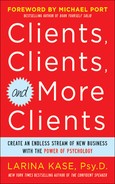How Attention Works
,Essentially, paying attention to something means that you concentrate on one thing while you simultaneously don’t concentrate on something else. There are several types of attention, but we are most interested in “selective attention,” which requires someone to tune out something else and tune in to you. There are dozens of things with which you must compete for attention, such as sites, sounds, physical sensations, thoughts, activities, and so on. If someone does not focus their attention on you, nothing more can happen—people cannot hear your ideas, consider your value, or remember you.
Our brains are designed to quickly shift attention. Imagine you are walking along in the woods thinking about what’s for dinner and you hear a rustling sound. Your brain must quickly shift gears to check out that sound—and be sure that what’s for dinner is not you! Our goal is for you to capture attention so that people are immediately interested in you, and then sustain attention so that they want to learn more. We’ll focus primarily on grabbing attention in this chapter because many of the topics we’ll cover later involve holding attention so you can further build relationships.
Researchers recently discovered that the brain processes something that grabs attention (such as a rustling in the woods) differently than something that requires sustained attention (such as mentally preparing your shopping list). In 2007, Massachusetts Institute of Technology researchers Timothy J. Buschman and Earl K. Miller trained monkeys to complete attention tasks on computers while their brain activity was monitored. When monkeys were presented with something that grabbed attention, such as a flashing object, the parietal cortex part of their brain was engaged. The parietal cortex is a more primitive part of our lower brains that keeps us focused on surviving. When, on the other hand, the monkeys were required to do something that required sustained attention, such as selecting something that looked different from other things, the prefrontal cortex region of their brains was engaged. The prefrontal cortex is the advanced part of our brains behind our foreheads that allows us to plan and strategize. So our first goal is for you to activate the parietal cortex and attract attention. Once you have successfully done this, the person’s brain may be willing to engage the prefrontal cortex and start thinking about how you may work together.
Some of the things that we think should grab attention do not actually work. For example, in writing we may make something large and bold to grab attention; however, a good deal of research has shown that varying the size of something does not capture attention as powerfully as focusing on other variables does (and we’ll cover these in this chapter). It can also be obnoxious to see gigantic headlines screaming out at you. Of course, you want your written headlines to stand out, so you can make them slightly larger or bold. What, then, is more important than size?
It turns out that there are five key things that grab attention and help people hear what you have to say.
